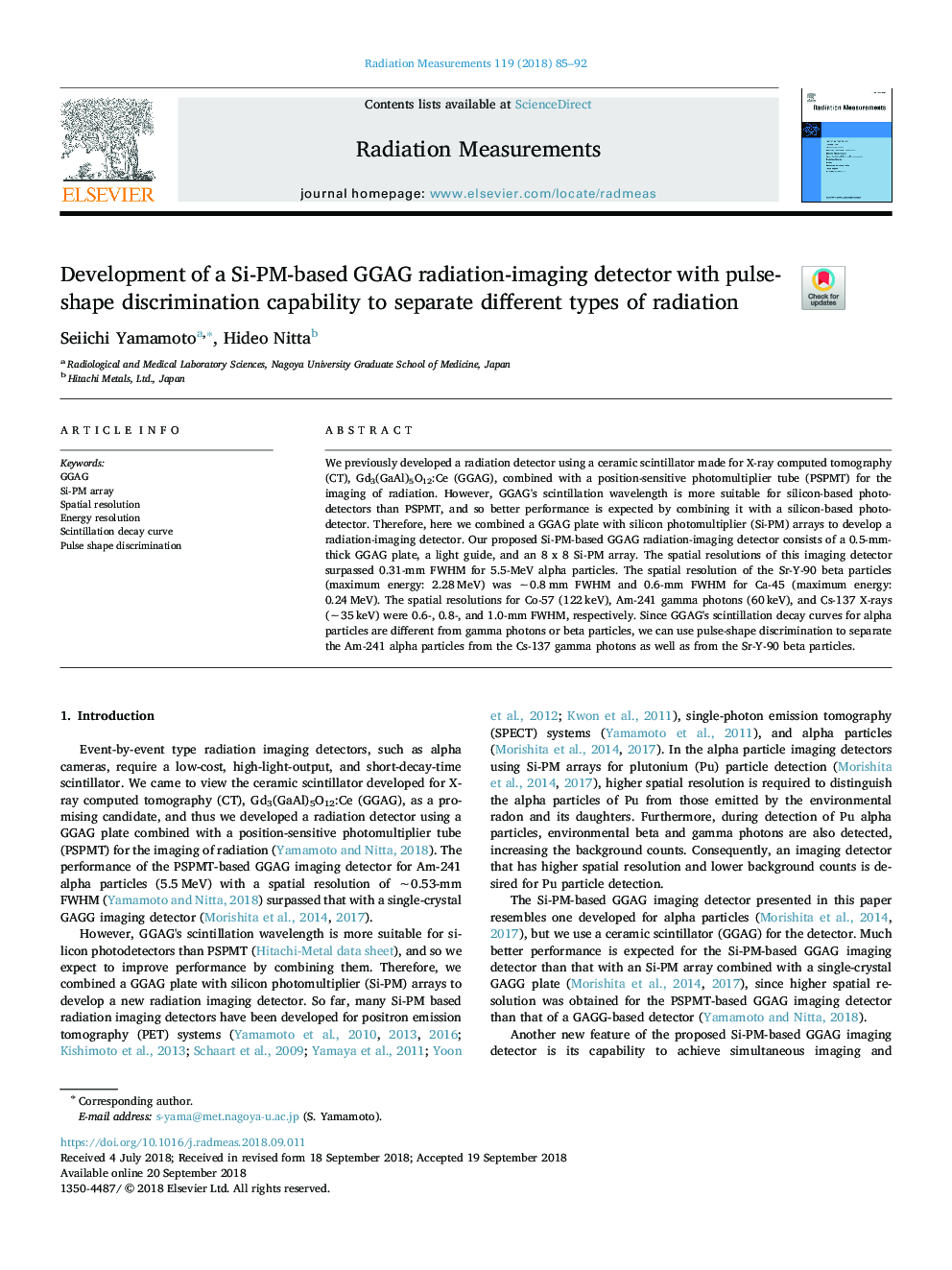| Article ID | Journal | Published Year | Pages | File Type |
|---|---|---|---|---|
| 11030940 | Radiation Measurements | 2018 | 8 Pages |
Abstract
We previously developed a radiation detector using a ceramic scintillator made for X-ray computed tomography (CT), Gd3(GaAl)5O12:Ce (GGAG), combined with a position-sensitive photomultiplier tube (PSPMT) for the imaging of radiation. However, GGAG's scintillation wavelength is more suitable for silicon-based photodetectors than PSPMT, and so better performance is expected by combining it with a silicon-based photodetector. Therefore, here we combined a GGAG plate with silicon photomultiplier (Si-PM) arrays to develop a radiation-imaging detector. Our proposed Si-PM-based GGAG radiation-imaging detector consists of a 0.5-mm-thick GGAG plate, a light guide, and an 8 x 8 Si-PM array. The spatial resolutions of this imaging detector surpassed 0.31-mm FWHM for 5.5-MeV alpha particles. The spatial resolution of the Sr-Y-90 beta particles (maximum energy: 2.28â¯MeV) was â¼0.8â¯mm FWHM and 0.6-mm FWHM for Ca-45 (maximum energy: 0.24â¯MeV). The spatial resolutions for Co-57 (122â¯keV), Am-241 gamma photons (60â¯keV), and Cs-137 X-rays (â¼35â¯keV) were 0.6-, 0.8-, and 1.0-mm FWHM, respectively. Since GGAG's scintillation decay curves for alpha particles are different from gamma photons or beta particles, we can use pulse-shape discrimination to separate the Am-241 alpha particles from the Cs-137 gamma photons as well as from the Sr-Y-90 beta particles.
Related Topics
Physical Sciences and Engineering
Physics and Astronomy
Radiation
Authors
Seiichi Yamamoto, Hideo Nitta,
